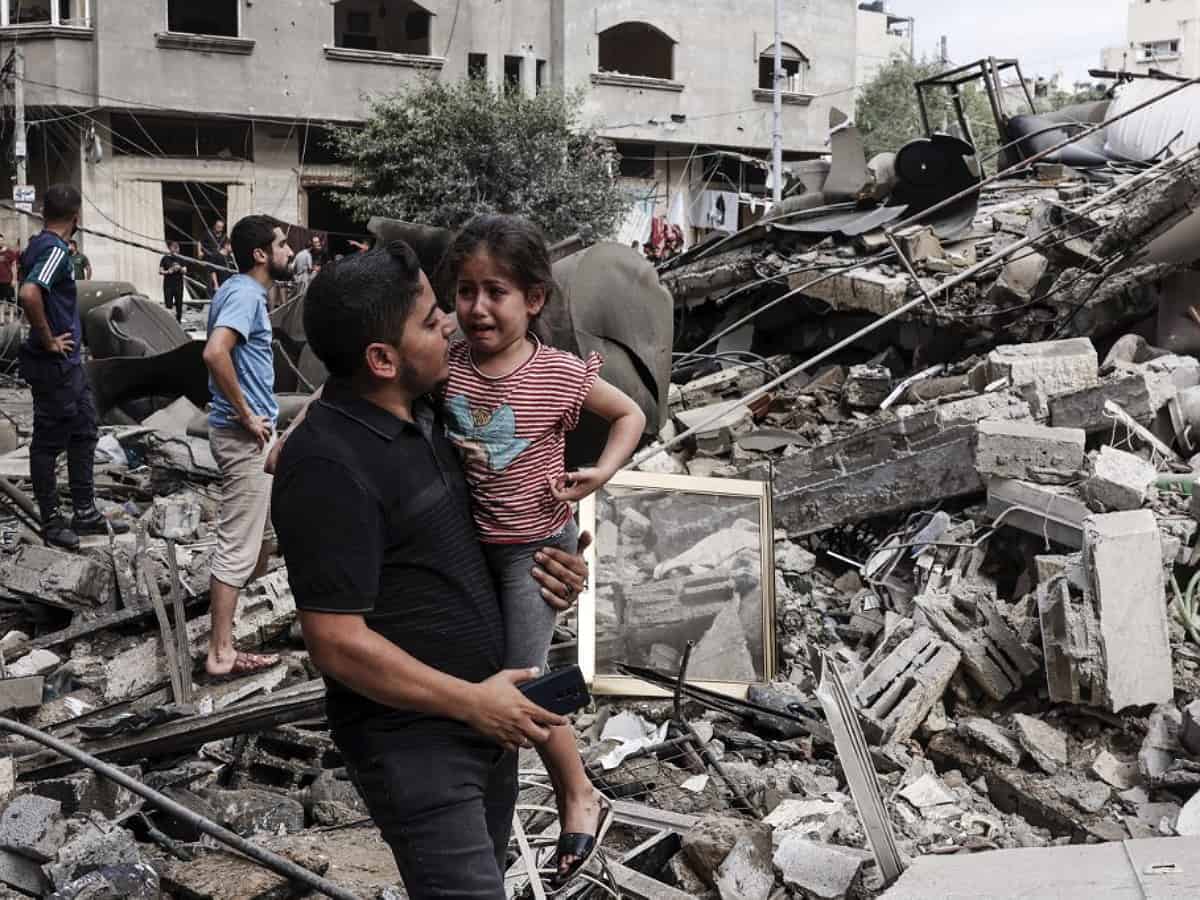
The war in Gaza, the longest and bloodiest between Israel and Palestinians since 1948, has reached its peak with no signs of a ceasefire in the near future.
Over the past 100 days, Israel’s war on the Gaza Strip has resulted in 23,968 deaths, and 60,582 injuries, and has turned the besieged enclave into an uninhabitable place.

At dawn on October 7, 2023, Palestinian militant group Hamas launched the “Al-Aqsa Flood” operation, in which thousands of rockets were fired from the Gaza Strip, storming Israeli settlements, and capturing soldiers and civilians.
Hamas attack on Israel killed about 1,200 Israelis, wounded about 5,431, and captured at least 239.
In response to the “Al-Aqsa Flood,” the Israeli army launched a military operation against the Gaza Strip, which it called “Operation Iron Swords.”
At that time, Prime Minister Benjamin Netanyahu formally declared war and also declared a complete siege, halting power, food deliveries, and water supplies to the 2.4 million residents of Gaza.
Since then, Israeli army conducted a devastating bombing campaign and ground operation, primarily targeting women, and children, resulting in massive infrastructure destruction and an unprecedented humanitarian catastrophe.

Destruction/humanitatian situation/victims of war in Gaza
The percentage of buildings potentially damaged or destroyed in Gaza is 45-56 percent.
Only 15 hospitals in Gaza are still operating out of a total of 36 hospitals.
Over 69 percent of school buildings in Gaza were damaged, along with 145 mosques, three churches, and 121 ambulances.

The Gaza Strip has experienced three waves of displacement since the war began, primarily from north and south Gaza Governorates, east to west Khan Yunis and Rafah, and central governorate towards Rafah.
The war displaced 2 million Palestinians, out of 2.3 million in Gaza Strip, into shelter centers, tents in camps, or with relatives.

More than ten Palestinian children on average have lost one or both of their limbs every day in Gaza since the beginning of the Israel and Hamas war on October 7, Save the Children reported.
The government media office in Gaza reported that around 10,400 children, 7,100 women, 337 medical staff members, 45 civil defense apparatus members, and 111 journalists were killed.
Since October 7, approximately 7,000 people have been missing under rubble, with 70 percent being children and women.
On November 21, Israel and Hamas reached the first truce in the war, agreeing to cease fighting for four days, exchange hostages in Gaza for Israeli prisoners, and allow more aid entry.
At least 105 hostages and 240 Palestinian prisoners were released, but the ceasefire collapsed and the war resumed on December 1.


Despite international efforts, Israel continues to restrict aid entry into Gaza through the Rafah border.
Since October 7, Israel dropped 65,000 tons of explosives on the Gaza Strip, resulting in over three times more firepower than the US nuclear bomb that destroyed Japanese city of Hiroshima in 1945.
The war in Gaza prompted South Africa to file a lawsuit before the International Court of Justice (ICJ), on December 29, accusing Israel of committing “genocide crimes” in the Strip.

The International Court of Justice (ICJ) held two public hearings in The Hague on January 11 and 12, as part of the commencement of this case’s consideration.
In its response at the hearing, Israel denied committing “genocide” against Palestinians during a hearing and defended its actions in Gaza as “self-defense.”
Fears of regional conflict expansion intensify following joint American-British strikes against Iranian-backed Yemeni Houthis, who doubled their Red Sea attacks against Israeli commercial ships in solidarity with Gaza.

Tensions persist on the Lebanon-Israel border, with daily fire exchanges between Lebanese Hezbollah and Israeli forces for over three months.
On Saturday, January 13, Israeli Prime Minister Benjamin Netanyahu stressed that “no one” will stop his country until it achieves victory over Hamas in the Palestinian Strip.
United Nations Relief and Works Agency for Palestine Refugees (UNRWA) commissioner-general Philippe Lazzarini warned of the devastating destruction and death in Gaza, highlighting the stains on humanity from the past 100 days of displacement, hunger, loss, and grief.

Lazzarini highlighted the ongoing psychological trauma experienced by Gaza’s children, the ongoing spread of diseases, and the imminent looming threat of famine.
“The situation in Gaza is dire, with thousands of children traumatized, thousands killed, maimed, orphaned, and deprived of education, putting their future in jeopardy,” he added.




